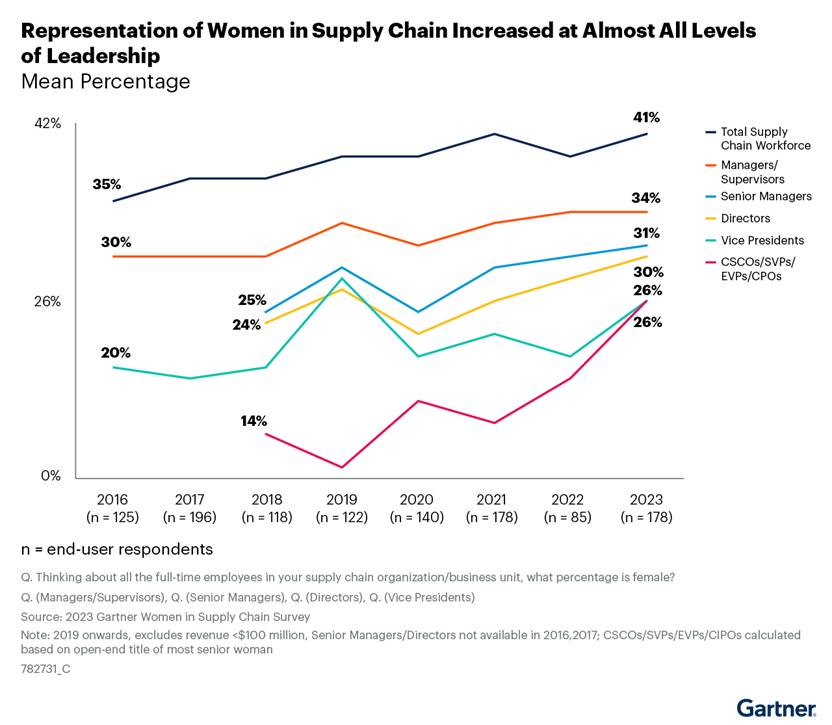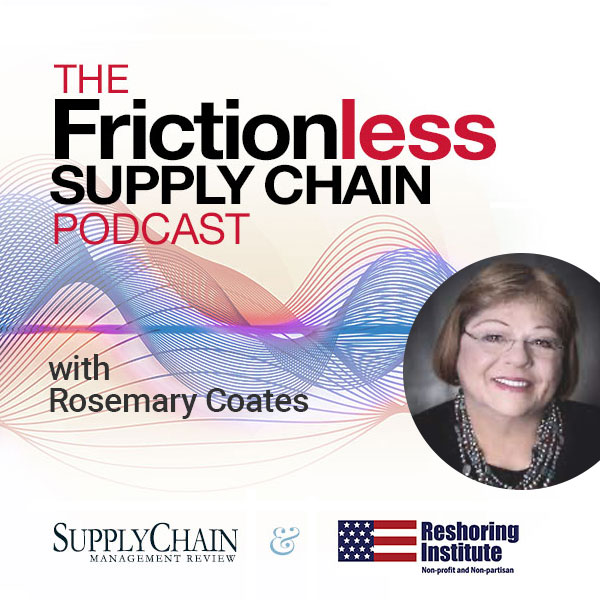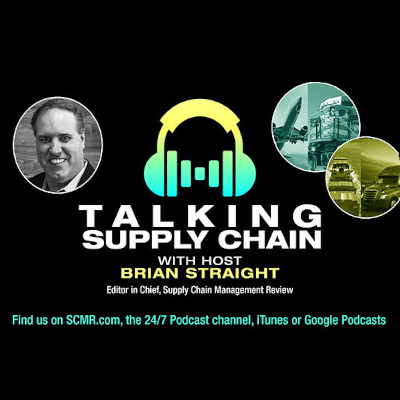Women made gains in the supply chain workforce in 202 and now make up 41% of the total workforce, according to a new survey from Gartner. However, while women have grown their over ranks in the past year, the growth rate in executive leadership is a bit slower, albeit still at a record high.
“It’s particularly encouraging to see women make gains at the senior executive level, as we know that when a woman holds the top supply chain position this has a positive correlation with more women in leadership and in all roles through that organization,” said Caroline Chumakov, director analyst in the Gartner Supply Chain Practice.
Overall, women in the workforce gained two percentage points in the 2023 survey, to 41% from 2022’s 39%. The total was also 41% in the 2021 survey. At the frontline level, though, women make up only 31% of senior manager positions and 34% of managers/supervisors, up just one percentage point in each category.
Significant gains were made in the C-Suite (CSCO, SVP, EVP, CPO), where 26% of roles are now filled by women, up from 19% in 2022. The 26% is an all-time high in the 8th Annual Women in Supply Chain Survey, and up significantly from 2019 when the number was in the single digits.
The poll was conducted from February to March of this year and asked 225 supply chain leaders questions on the number of women at all levels of the supply chain as well as questions about representation of women from underrepresented races and ethnicities, practices that increase the success of women in supply chain roles, pay equity and transparency, frontline engagement practices for women in on-site roles and attrition challenges specific to women. It was completed in partnership with AWESOME, a U.S.-based nonprofit organization focused on advancing women’s supply chain leadership and boom!, a U.K.-based global community formed to support and link women in the supply chain profession.
The big question that remains is whether the gains made by women will be sustainable. “The data suggests a virtuous cycle is possible as more women reach top leadership roles in their supply chain organizations, with a clear finding this year that a woman in the senior-most role leads to more women in leadership and all roles within the organization,” Gartner noted.
Women in vice president roles also saw a jump in the 2023 survey to 26%, up from 21% a year ago.
“This connection between female leaders and the effect on women in the workforce has positive implications for how supply chain leaders can better design their efforts to improve representation of women in supply chain,” said Chumakov.

(Graphic: Gartner)
On the frontlines, chief supply chain officers continue to report challenges with attrition at roles in manufacturing and logistics when compared to desk-based roles.
“The ability to attract more women to frontline roles—and especially in leadership roles in the physical operations ranks—could form a material competitive advantage over those who are unable to do so,” Gartner said.
The survey also found that flexibility is an attractive benefit in attracting and retaining women, “significantly outperforming other areas such as benefits, employee engagement programs and even a focus on pay equity.” However, only 41% of supply chain leaders have implemented an initiative dedicated to workplace flexibility.
“There remains a mismatch between employers’ fears of chaos and instability as a result of workplace flexibility policies and the realities of what we see in our research and case studies of successful supply chain organizations. What we see in our research is that flexibility is benefiting both the organization and their female employees,” said Chumakov.
SC
MR


Latest Supply Chain News
- Planning fatigue may be settling in
- Inflation, economic worries among top supply chain concerns for SMBs
- April Services PMI declines following 15 months of growth, reports ISM
- Attacking stubborn COGS inflation with Digital Design-and-Source-to-Value
- Despite American political environment, global geopolitical risks may be easing
- More News
Latest Podcast

 Explore
Explore
Business Management News
- Planning fatigue may be settling in
- Inflation, economic worries among top supply chain concerns for SMBs
- April Services PMI declines following 15 months of growth, reports ISM
- Attacking stubborn COGS inflation with Digital Design-and-Source-to-Value
- Joseph Esteves named CEO of SGS Maine Pointe
- Employees, employers hold divergent views on upskilling the workforce
- More Business Management
Latest Business Management Resources

Subscribe

Supply Chain Management Review delivers the best industry content.

Editors’ Picks




